Matador Network's Blog, page 2142
February 19, 2015
Signs you learnt to drink in England

Photo: Perfectance
1. You’ve burned your pubic hair after a Flaming Sambuca stunt went wrong.
2. Pissed ONLY means drunk, not angry.
3. Bladdered, blotto, lashed, mullered, pickled, pie-eyed, plastered, sloshed, smashed, sozzled, squiffy, wankered, wasted and wasto are just 14 out of 141 ways to say you’re getting pissed (see above).
4. Add “off me trolley” to that list, as well.
5. A piss-up means a party, not actually weeing to defy gravity.
6. Your first hangover, age nine, was cider-induced and you puked all over your mum.
7. But you threw up then carried on drinking, you trooper. And it was your mum who cracked open another can of Scrumpy for you.
8. Faking your DOB on an NUS card was a rite of passage.
9. And then going down the pub instantly became less fun once you turned 18.
10. With age, you’ve learnt that drink choice is based solely on colours (patriotic red, white/transparent and blue) and numbers (%).
11. You swear by the old adage: “Eating’s cheating.”
12. And view those who don’t consume alcohol with suspicion.
13. “You can hold your drink” is the ultimate compliment you can give or receive.
14. The only temperature for a lager, bitter or ale is “warm”.
15. A beer garden is a sanctuary for summer fun and wholesome frolicks, until some twat gets sunburnt, picks a fight, spills some pints, breaks some glasses then vomits on himself.
16. You have to finish a drink even if it tastes like rat’s piss, but looks like a Cosmopolitan.
17. That’s because price is always an issue, and pride’s always at stake.
18. You can open a beer bottle 23 different ways, including with your bum, your armpit and your wonky English teeth (we have charming smiles, innit).
19. You let your stiff upper lip relax when sipping a tipple; if you didn’t, there would be unnecessary waste.
20. A nightcap is not a head garment.
21. Dutch courage? ENGLISH courage!
22. We always buy a round, then take over a table, much like we used to take over other countries.
23. Darts, pool, and quizzes are legitimate sports.
24. Exercise is paramount. Spend all your cash on booze + no money for a taxi = the walk of shame home.
25. A landlord or landlady is the person you give money to for booze, not rent.
26. You frequent your local so often, your salary gets paid straight into the landlord’s bank account.
27. Bald Faced Stag is the name of your local, not an insult.
28. Your kids are called Carling, Stella and Newkie.
29. Your grandchildren are called chardonnay, Pinot grigio and merlot.
30. Your dog’s called Beefer.
31. That’s B for Boozer.
32. Drinking whisky — or indeed any alcohol — from a porcelain teacup is the norm.
33. That’s whisky from Scotland without an ‘e’ — none of that rye bullshit.
34. When you drink Boddingtons, it’s mandatory to wipe your mouth with the back of your hand then say “By ‘eck.”
35. We’re all lords when it comes to getting drunk.
36. Wearing beer goggles is a licence to get off with anything, pulse or otherwise.
37. Wearing a bollard bonnet is the funniest thing in the world, especially after 15 pints of lager.
38. You go out at night without a coat in minus-degree temperatures because queuing up at the cloakroom is a waste of valuable drinking time.
39. Shandy is an acceptable tipple, particularly in summer.
40. So is a lager top.
41. Trampagne is also an acceptable tipple, at any time of the year.
42. It simply isn’t a good night out without an honest, passionate yet slurred declaration of love. And take it seriously: this is as emotional as we English get.
43. It simply isn’t a good night out without balling your eyes out for no apparent reason.
44. Boozy games #1: Minesweeper — locating leftover champagne at weddings.
45. Boozy games #2: Buckaroo — where you place objects on a passed-out drunk and wait for them to buck them off.
46. Boozy games #3: Dance of the Flaming Arseholes is also a fun group activity.
47. The best way to make friends on your first day on a new job is take your colleagues down the pub at lunchtime.
48. The best way to keep friends on your first day on a new job is take your colleagues down the pub after work.
49. You fall asleep cuddling a pint of warm ale.
50. You wake up with an empty pint of warm ale and think you pissed yourself.
51. That’s ‘wee on yourself’ and has nothing to do with parties or getting drunk.
52. Buying a doner kebab — with chips and all the sauces — for the journey home is mandatory.
53. And you know that last night’s doner kebab is a more than an adequate breakfast. 
February 17, 2015
Signs you're culturally from Delhi

Photo: THINKGlobalSchool
1. You refer to everyone (bar your actual family) by the title of close relatives
Including Aunty, Uncle, didi (sister), bhaiya (brother).
2. And you have an ongoing love/hate with relationship with your landlord
(Aka Aunty / Uncle) who in turn refers to you only as beta.
3. You no longer eat “curry”
No, you eat dal makhani, chole bhature, and palak paneer, washed down with chai, not tea.
3. You can (and do) get everything delivered straight to your door
I’m talking alcohol, cigarettes, aspirin, and a single bar of chocolate. Oh, and some ice. And a sponge. And milk.
4. You have a drawer full of ‘visiting cards’ for every sort of service professional you may at some point in your life require
Doctor, carpenter, taxi driver, massage therapist, tailor, electrician, removal man, ironing man, bamboo man; the list goes on.
5. You know you shouldn’t, but you eat roadside food at almost every dhaba
6. And Jugaad has become so much more than just your favourite Hindi word
It’s a philosophy and a solution to almost every problem.
7. You’ve mastered the Indian head wobble
An aqueous head motion with no accurate translation, it’s merely an ambiguous affirmation that you have said something.
8. Weddings are no longer a boring affair
They are an almost week-long matrimonial marathon of wardrobe changes and buffets big enough to feed an army…attended by 1000 of your closest friends and family.
9. You find yourself speaking “Hinglish”
“Have you reached?”
“Actually, I will take some time: ‘office time’ traffic”
“Well I’m glad we didn’t pre-pone!”
“I’m 5 minutes away, only”
“Do one thing, call and cancel”
10. Almost nothing, bar the city’s dodgy wiring, can shock you
Even three generations and the family goat cruising down the NH8 on a scooty. 
How to insult like the British
BRITS KNOW HOW TO make fun of each other. And themselves, for that matter. For much of the rest of the world, their insults and slang are impenetrable, though, which is why the internet gave rise to shows like Anglophenia. Host Siobhan Thompson picks a different British topic to cover each week — usually covering language or dialect — and tears it apart. Give the whole series a watch, if you have the time, but if not, check this one out.
Never again will you have to be confused if someone calls you “thick as two planks,” or a “berk.” And you might pick up a few things to use if you ever want to simultaneously insult and confuse a fellow non-Brit. 
This is the world's coldest town

Photo: Maarten Takens
SO you live in Maine or Michigan or Canada and you think you have it rough in the winter. That’s cute.
Out in the middle of Russia’s vast Sakha Republic, an area that spans over 1 million square miles, is the world’s coldest city, Yakutsk. It’s built entirely on permafrost and the average winter temperature is -30 F. The cold has been described by visitors as physically crippling, like something grabbed their legs, wrapped around them, and would not let go.

Photo: Reiward
The city, with a surprisingly large population of 270,000, is constantly covered in a heavy fog. The mist from people’s breath, from car exhaust and from factory emissions never dissipates. It just hangs there, day and night.

Photo: Magnús H Björnsson
While the majority of the city’s population are indigenous Yakutian, many ethnic Russians and Ukrainians moved to Yakutsk in Soviet times, lured by high wages for working in the harsh climate. You won’t find the locals cowering inside by their fireplace, either. Yakutsk has a stadium, restaurants, many nightclubs, and concert halls.
So the next time you think your winter is unnecessarily harsh or long, think of the badass inhabitants of Yakutsk and go get on with your life. At least summer comes eventually where you live. 
Stop ivory-funded terrorism [vid]
A simple question: When you buy something made of ivory, where does the money go? The answer may surprise you.
After guns, drugs, and humans, ivory smuggling is the world’s fourth-largest illicit trade. Poaching and illegal sales of ivory have grown so widespread — despite international condemnation — that we may see the end of elephants in the wild in our lifetimes. There’s really only one solution — end the demand. Stop buying ivory and spread the word about this trade, or say goodbye to elephants. 
10 simple steps to crisper photos
When we get a lens that allows for shallow aperture, we get really excited about creating all that delicious bokeh and blur in the out-of-focus background, isolating our subjects and feeling a heightened sense of creativity. However, many of us in this situation live around f/2.8 (or even f/1.4) and then wonder why the images aren’t super sharp. This is because the depth of field is too narrow and you can easily miss your focal mark — for example, if you’re taking a portrait and you misfocus on the eyes, you might get a nose or ear sharp instead. If this happens to you a lot, but you still want some background blur, try working at f/4 or f/5.6 to pull more of your subject into focus. The background might remain blurred but a bit less so (this would depend on how much zoom you are using, among a few other factors). Regardless, your subject should retain more overall sharpness and really pop from the rest of the scene. If you’re shooting a landscape, do what you can to be around f/8 up to f/13 or even f/22, with f/11 being a prime aperture on many lenses for optimum front-to-back sharpness (the image is sharp from the foreground all the way through to the background), contrast, and overall “pop.”

Mountain goat, Olympic National Park, Washington
1/400 sec, f/4, ISO 160, 24-135mm lens at 70mm
Hand-held, image stabilization
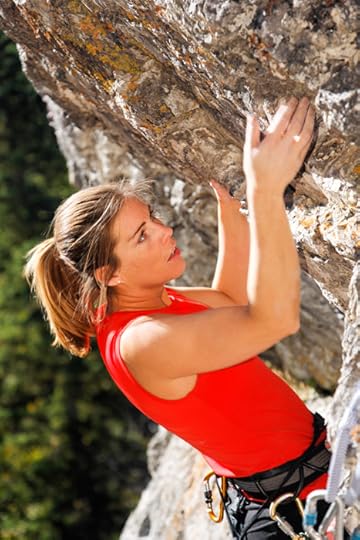
Climber on overhanging cliff face, Banff, Alberta
1/80 sec, f/5, ISO 100, 24-105mm lens at 105mm
Hand-held, image stabilization, camera braced on knees in seated position, fill flash
2. Shutter speed
A general rule of thumb to start with when shooting specifically hand-held (no tripod) is to use a shutter speed that is the inverse of your lens focal length. When shooting with a 200mm lens, for example, use a shutter speed of 1/200 second or faster, minimum, for a sharper shot. This is called the “1/mm rule,” and explains why you can shoot a wide angle lens at a much slower shutter speed than a telephoto lens and still get crisp photos. As you add length to the lens, the natural (and unavoidable) movement in our hands (and feet, and whole body) become more and more pronounced, especially if with that length comes weight.
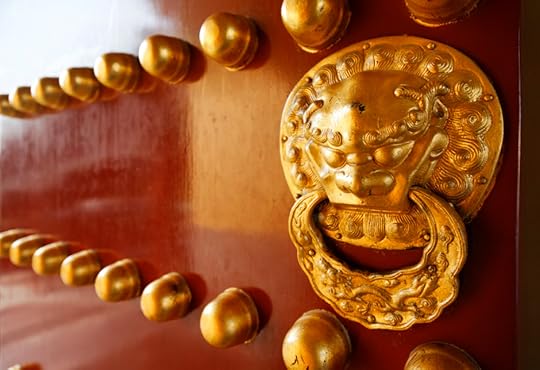
Ming dynasty style door knocker, Temple of Heaven Park, Beijing, China
1/30 sec, f/4, ISO 100, 24-105mm lens at 24mm
Hand-held, on knees, elbows braced at sides, image stabilization

Decapitated tulip head laying in muddy water, Skagit Valley farm, Washington
1/200 sec, f/5.6, ISO 800, 70-200mm lens at 200mm
Hand-held, image stabilization
3. Control Your Focus
For better control over you focusing, you may need to change your camera’s focusing mode to only use one focusing point. This allows you to choose exactly where you want the main focal point to fall in the frame. Without doing this, you really can’t control what your camera is focusing on — it’s pretty much just guessing.
For example, when taking a portrait, be sure to focus on the eyes — especially at wide apertures. Sometimes these wide apertures can be so shallow that you can’t even get both of your subject’s eyes in focus, especially if one is farther back than the other (at an angle). You could ask your subject to directly face the camera so that both eyes can be in focus, but that isn’t always the most flattering pose.
If only one eye can be in focus, make it the more dominant eye closest to the camera. Another example being landscapes, you want to focus on something in your foreground, at a high aperture, sending the focus from that point all the way to the back of the frame. Focusing on those pretty mountains far away won’t do too many favours for everything in front of them.

Portrait of teenage girl leaning against brick wall, Everett, Washington
1/100 sec, f/4, ISO 200, 24-105mm lens at 67mm
Hand-held, image stabilization, fill flash shot through diffuser umbrella
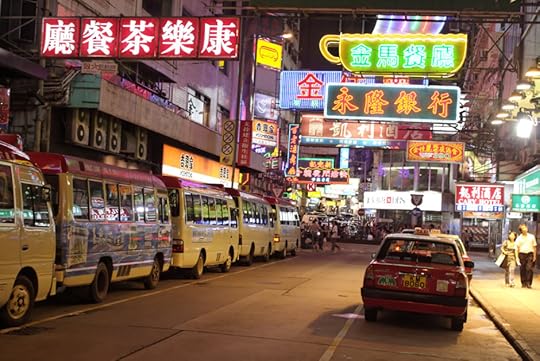
Kowloon street at night, Kowloon, Hong Kong
1/30 sec, f/5, ISO 400, 16-35mm lens at 35mm
Hand-held, image stabilization
4. Light
If you’re making sharper images by using fast shutter speeds and narrower apertures, that’s great! But it can mean you are blocking out a lot of light. One good way to handle this — aside from landscapes — is to place your subject in bright shade, or right next to a window that doesn’t have direct sunlight streaming in. Light can then reflect in from many directions to bath your subject in soft bright light.
For landscapes, a method is to shoot at brighter times of day (but this can lead to harsh shadows, so aim for early morning or late afternoon). If you are shooting at golden hour or morning hour (sunset or sunrise) times then you might lose light quickly and thus need to brace, rapid fire, or break out a tripod, allowing you to lower your shutter speed (letting in more light). Read on for each method.

Girl in window light
1/400 sec, f/1.8, ISO 100, 50mm lens
Hand-held, image stabilization
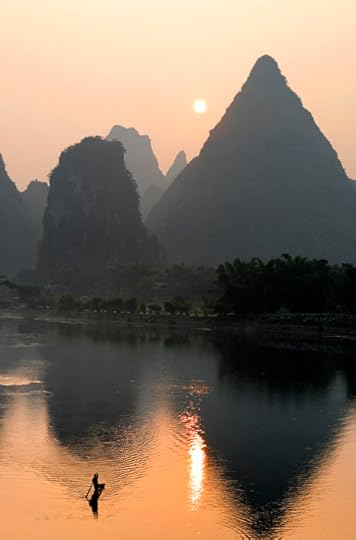
The sun rises over karst mountains and a man paddling bamboo raft down Lijiang River, Yangshuo, Guanxi, China
1/80 sec, f/8, ISO 100, 70-200mm lens at 70mm
Hand-held, image stabilization, braced on bridge railing
5. Bracing
If you cannot break out a tripod (either you don’t have it, or you don’t have time) then proper bracing will also help you to hold your camera very steady. Here are some suggestions: first, stand with your feet straight and steady; cradle your left hand under the camera body with fingertips under the lens and put your right hand on the side of the camera ready to push the shutter release; bring both elbows in tight against your body and hold the camera lightly up against your face. Next, take in a deep breath, let it back out about half way, hold it and relax. Slowly and lightly press the shutter release button. Even better than standing is to find something to lean, sit or lay against. Sometimes I’ll even brace the camera itself against a tree, on top of my bag or jacket, or directly on the ground.

Red fox (black phase), Mount Rainier National Park, Washington
1/200 sec, f/5.6, ISO 400, 420mm lens
Hand-held, image stabilization, camera resting on edge of partially-opened car window

Yellow tulip and blue sky, Skagit Valley farm, Washington
1/100 sec, f/11, ISO 200, 24-105mm lens at 24mm
Hand-held camera braced on ground, image stabilization
6. Rapid fire
Aside from lens length and slow shutter speeds, another way we introduce camera shake is by pressing and releasing the shutter release button — obviously something critical to photography. One of my favorite tricks for getting sharper hand-held photos is to set my camera up for continuous shooting mode and holding the shutter release button down for a series of three or more photos. Often the middle exposures will be sharper than the first and last shots because your finger is stationary on the button during these middle shots, rather than actively pressing or releasing the button during the first and last shots.

7. Tripod
With many of my landscape, cityscape or nature photos shot in early morning or late evening light, and often using narrow apertures for great depth of field, shutter speeds can easily run from 1/4 to 30 seconds or longer. A tripod then becomes essential for sharpness. I like to use a tripod with a ball head and quick release plate that lets me quickly attach the camera and frame up the scene. Tripods come in all sizes, including some that collapse down for easier packing. Choose one you can carry easily and practice setting it up at home so you’re comfortable with. Even in nice light, a tripod is a great tool to ensure your images are absolutely tack sharp. Remember — parts of the image can be “blurry” or smooth, especially shooting in full seconds. You could have people moving around, rivers, ocean, clouds, cars, all moving — but with a tripod, your focal point should still remain nice and sharp.
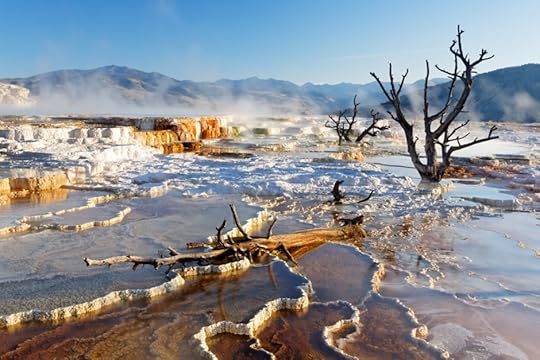
Travertine terraces, Mammoth Hot Springs, Yellowstone National Park, Wyoming
1/3 sec, f/22, ISO 100, 24-105mm lens at 35mm
Tripod, cable release, mirror lockup
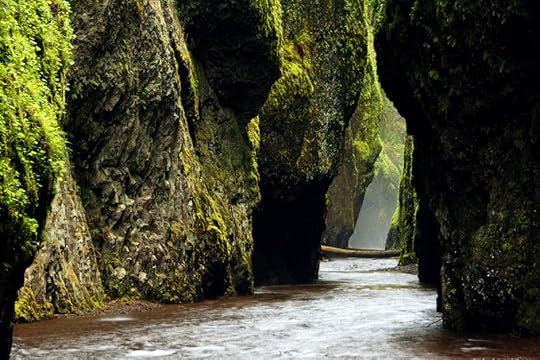
Oneonta Creek, Columbia River Gorge National Scenic Area, Oregon
1.3 sec, f/16, ISO 100, 70-200mm lens at 150mm
Tripod, cable release, mirror lockup
8. Shutter release cable or timer
Even with your camera firmly mounted to a tripod, pushing the shutter release button with your finger can still jostle the camera during exposure (especially a long one). You can easily avoid this by either using a shutter release cable or by using your camera’s built-in timer to trigger the shot instead of your finger. I often use my camera’s two-second timer, but I’ll haul out the shutter release cable if timing the picture to some fleeting moment in the scene is important.

Daffodils blooming on Skagit Valley farm, Washington
1/8 sec, f/18, ISO 100, 17mm tilt-shift lens
Tripod, cable release, mirror lockup
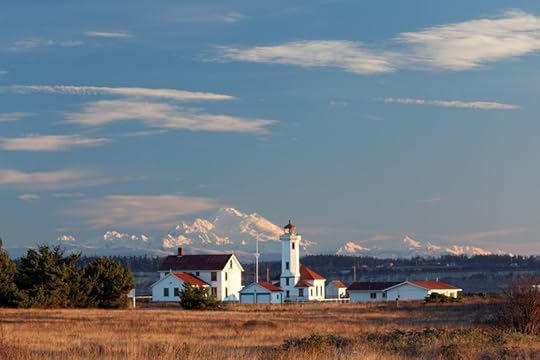
Point Wilson Lighthouse and Mount Baker, Port Townsend, Washington
1/15 sec, f/8, ISO 100, 70-200mm lens at 200mm
Tripod, 2 second timer, mirror lockup
9. Mirror Slap
If you own an SLR, the first thing your SLR camera does after you press the shutter release button is swing the viewfinder mirror up and out of the way of the shutter. That clicking noise you hear when you press the shutter release is the mirror slapping up against the view finder. This motion causes the camera to vibrate a little, which can cause image blur at a slow or long shutter speed. This is especially noticeable when you are using a long telephoto lens, like a 200mm, which magnifies any camera motion. Check to see if your camera has a “mirror lock” feature. With this feature turned on, you will need to press the shutter release button twice: once to swing the mirror and again to release the shutter and take the photo. The pause between these two presses give time for these mirror slap vibrations to settle out. The viewfinder will go dark between these button presses, so used this technique with a tripod.

Purple irises blooming on Skagit Valley farm, Washington
1/4 sec, f/22, ISO 100, 17mm tilt-shift lens
Tripod, cable release, mirror lockup
9. Image stabilization
Many lenses and some cameras have some form of image stabilization, vibration reduction or “SteadyShot.” Sensors within the lens or camera detect camera motion and automatically nudge the image or the sensor in the opposite direction to compensate. This bit of electronic magic lets you hand-hold your camera with shutter speeds 4 to 10 times longer than the “1/mm rule” mentioned above. Image stabilization works particularly great when you are shooting with shutter speeds down to about 1/4 second. If you want really sharp photos all the time, these lenses might be worth investing in.

Snow Geese in flight, Skagit Valley, Washington
1/250 sec, f/5.6, ISO 100, 420mm lens
Hand-held, image stabilization
10. Bringing it all together
All of these techniques can be combined to make photos with super sharpness — even if part of the image is moving in a long exposure. When shooting hand-held, you can consider the “1/mm” rule, find good light, brace your camera, use breath control, lean up against something solid, use ISO, use image stabilization, and/or fire off a burst of several or more shots. For really long exposures, find good light, shoot from a tripod, use a shutter release cable or timer, and engage that mirror lock feature. All the time be considering your aperture (especially if wide), and be in control of your focal point(s). Now go shoot!

Point Wilson Lighthouse under starry skies, Port Townsend, Washington
30 sec, f/4, ISO 1600, 24-105mm lens at 28mm
Tripod, cable release, mirror lockup
Note: Lighthouse is illuminated by moonlight
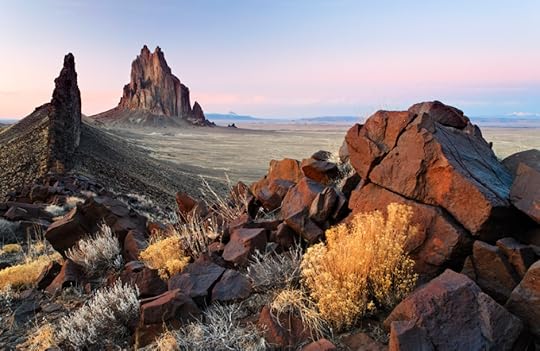
Shiprock Rock, New Mexico
15 sec at f/16, ISO 100, 24-105mm lens at 35mm
Tripod, cable release, mirror lockup 
Signs you learned to drink in Wales

Photo: Steve Watkins
1. You had your 10th birthday party, your first drink, first dance, first kiss, possibly first shag (out the back behind the bins?), your wedding, your baby’s christening, and will have your funeral at your local social club.
For the uninitiated, a social club is an ugly grey building built in the 1920s and designed to be the social centre of small or inner-city communities. They can take the form of the rugby, football or snooker club; the Labour, Conservative or Lib Dem club; the ex-serviceman’s or railway club, and so on. They host fitness classes for your mom and show rugby on a big screen every weekend. Most importantly, the beer and room hire are dirt cheap and there appears to be no adherence to drinking, gambling, or performance laws. Most people there are quite old and have been boxers at one point in time.
2. You know what “aaaaarf a daaark” means, not that you’d ever want one.
3. You walk down Wine Street in Swansea on a Saturday night and think everything you see around you is normal.
4. You can’t sing the national anthem without holding a plastic glass full of Brains. Kept cold by drinking it outside, in February, in a red t-shirt, also holding an inflatable daffodil.
5. On the anthem, you’re only really sure about the lyrics to the one-word chorus: “GWALD, GWALD!” Which you scream with the passion of Zeus in the direction of the nearest Englishman/woman.
6. You once had an out-of-body experience trying to watch the rugby sober. Never again.
7. You eat chips with curry sauce before, during, and after a night out.
8. “I’m not being funny but…” is the only thing you can say or hear after midnight. And servers in kebab shops understand, correctly, as a request for chips and curry sauce.
9. You order wine on the assumption it represents the highest alcohol-to-price ratio. It always tastes awful, so you put lemonade in it and genuinely think this is being posh.
10. There are only six alcoholic drinks and three of these are different colours of beer — cider, vodka, and wine round out the bunch. You’ve attempted all the possible mixes, but the only one that worked was banned from pubs. Oh Snakebite, how I miss those luminous stains outside my student house. *Shudder*.
11. You know that every time an old man walks into a pub, no matter how far from his hometown, he will know at least one person there.
12. When in London, you refuse to believe £5 for a single glass of wine is reality. So you square up to the barman and say “I’m not being funny…but I go out with a fiver back home and get wasted, chips and curry sauce, AND a taxi. You’re taking the piss London.” 
How many basic words do you know?
12 side effects of living in Chile

Photo: Felipe Skroski
1. You learn what a real sandwich looks like.
Gone are the days of two slices of bread, a few sad pieces of turkey, some lettuce and tomato. Chileans have a whole different idea of what constitutes a sandwich. Imagine a fresh, toasted hamburger bun heaping with hefty slabs of lomo (pork tenderloin), covered in melted cheese, doused in mashed avocado, piled on with mayonnaise, and then wipe the drool from your chin.
2. You start watching puppet shows to become a more informed citizen.
31 Minutos is a widely popular Chilean satirical news show which features puppets performing comically crass political commentary, impersonations of public figures, and enough double entendre to keep the parents entertained while kids remain obliviously engaged.
3. You start referring to everything as an animal.
Chileans love slang, especially animal-related slang. When you’re “pasandolo chancho,” it doesn’t mean you’re passing a pig, it mean’s you’re having a great time. When you’re “echando la yegua,” it doesn’t mean your horse laid down, it means you’re ready to relax after a tiring activity (like eating a lot). Popcorn is called cabritas (little goats) or palomitas (little doves); a sapo (frog) is a tattletale; a vaca (cow) is an idiot. After a while in Chile, you’ll find your daily language sounding more and more like a rendition of “Old Macdonald Had a Farm.”
4. You find a second home in Jumbo.
With its abundant, gleaming white aisles filled to the brim with a huge variety of everything you could ever imagine, from electronic goods, to home goods, to food, cosmetics and even clothing, you will inevitably draw comparisons between Jumbo and Target (if you’re from a country that’s blessed with Target). You will find yourself wandering around the aisles whenever you miss home (or more likely curled up on a sofa in the home furnishings section, cradling a jar of Nutella). If you can’t find a Jumbo, find solace in a Lider, which is actually owned by Walmart.
5. You discover that there is never a bad time to eat a Super 8.
Super 8 is an amazingly popular candy bar that Chileans eat all the livelong day. It’s a light, chocolatey wafer concoction that doesn’t make you feel terrible about yourself even though it’s candy. You can find Super 8 pretty much everywhere you look. Vendors even walk through traffic on the highways to sell them!
6. You feel oddly connected to Germany.
Due to a large wave of German immigrants that arrived to Chile during the latter half of the 19th century, traces of German culture have seeped their way into Chilean identity. The prevalence of sausages and sandwiches in Chilean cuisine, beer brewing techniques, names of streets, and even architecture in certain southern parts of Chile are all indicative of a history of German colonialism. In fact, a chain of Chilean diners is called La Fuente Alemana, the German Soda Fountain.
7. You eat, drink, and breathe corn.
Chileans have mastered many diverse ways of preparing choclo (Chilean for corn): Pastel de choclo, a savory corn pie with meat and veggies cooked into a corn bread; Humitas, corn mashed with onion and hot chili, wrapped in corn husks and baked or boiled; Mote con huesillo, a sweet peach refreshment containing softened corn kernels (a variation contains husked wheat instead of corn); maíz frito aka fried corn kernels, a salty picoteo (snack, usually eaten while imbibing), they even put corn on pizza!
8. The street becomes your food court.
Sopaipillas, sandwiches, fruit juices, Super Ochos, maní confitado, completos, empanadas — if it exists in Chile, you can buy it on the street. You’ll be enchanted by the plentiful options and giddily hop from stand to stand, making a normal stroll down the Alameda a one-stop, one-of-a-kind gastronomic experience.
9. You drop “po” left and right.
Few things are more Chilean than the abundant — at times even excessive — use of “po,” an abbreviation of “pues” which means “well,” but is used primarily as a meaningless filler. Dropping your first “po” after you move to Chile is something of a rite of passage. You’ll never expect it but once it happens, you’re officially culturally Chilean. Before you drop your first “po” you might say your first “cachai?” This should warn you that “po” is near.
10. You start sprinkling merken on everything.
Like avocados, merkén (smoked chili pepper) is an ingredient that Chileans love to incorporate whenever possible. It won’t be long after you move to Chile that you find yourself sprinkling merkén on cheese, eggs, and definitely on pebre (Chile’s even more delicious variation of salsa).
11. You start teasing your friends to their faces and complimenting them behind their backs.
Chileans are a humorous bunch, and they get a kick out of teasing their loved ones. There’s a running joke amongst young Chileans that men speak disparagingly to one another’s faces and praise each other behind their backs, and that the opposite is true for women. Whatever the case, as a gringo you will be an easy target for some teasing and rather than get defensive, it’s best to join in!
12. You make friends for life, and become a better friend yourself.
Chileans are thoroughly caring, generous people. They’ll offer you a shoulder to cry on, a ride home, to accompany you to the doctor’s office, even the last empanada. You’ll be hard-pressed to find better people in the world, and being surrounded by your kind Chilean friends all the time will make you a better person. 
Why Nordic countries are better

Photo: Trond Kristiansen
1. Surreal natural beauty
Let’s start with the most in-your-face: Aurora Borealis (see above!). Norway’s fjords. That mouthful of a volcano, Iceland’s Eyjafjallajökull. Nordic countries are the place to go for a jaw-dropping experience of the sublime.
2. People eat really well and often

Photo: Stephen Coles
The Nordic countries pretty much win the food Olympics for healthiness, affordability, quality and quantity of food available to folks who live there. Oxfam International’s “Good Enough to Eat” Index ranks Sweden and Denmark especially high, as GlobalPost’s Sarah Dougherty noted.
3. Women rock parliament
Sweden, Norway, Finland, Denmark and Iceland all have high levels of female representation in their parliaments. The regional average of the Nordic countries is 40 percent. To put that in perspective, the next highest is the Americas with 25 percent.
How did the Nordic countries come so far? Researchers point to secularization, the strength of social democratic parties and the development of an extended welfare state, women’s entrance into the labor market in large numbers in the 1960s, the educational boom in the 1960s and the electoral system.
4. Not so much corruption
Denmark is tied for first in Transparency International’s corruption index (first is good), and the rest of the Nordic countries aren’t far behind. Finland and Sweden are tied for third, and Norway is tied for fifth. Iceland is tied for 12th, but that’s still way better than the United States at 19th.
5. Daddies get parental leave, too

Photo: Solis Invicti
Nordic countries have some of the most progressive parental leave policies out there. Notice that said “parental leave,” not just “maternal leave.” Yeah, that’s how Nordic countries see it. They all boast generous parental leave schemes with high compensation rates and affordable public daycare.
Norway introduced shared parental leave in 1977 and was the first to establish a quota for fathers in 1993. Today, parental leave in Norway totals 47 weeks with a minimum of 14 weeks for the father.
In Finland, women are entitled to four months leave starting from, at the latest, one month before the birth. Men are entitled to 54 days leave and six months can be divided between the parents. And in Sweden, parents have a total of 480 days with a minimum of 60 days for each parent. Parents can use the leave until their child turns 8.
6. Finnish baby boxes

Photo: hugovk
In Finland (putting aside the “Finland isn’t part of Scandinavia” debate), expectant mothers are given a box for their baby to sleep in that is filled with some essentials. Sort of like everything your baby needs to survive.
“It’s a tradition that dates back to the 1930s and it’s designed to give all children in Finland, no matter what background they’re from, an equal start in life,” according to the BBC.
What’s in the box? Diapers and onesies, a sleeping bag, outdoor gear, bathing products, bedding and a small mattress.
7. Really good education
Since it was reformed 40 years ago, and until last year, Finland’s education system was frequently held up as one of the best in the world. In 2012, Finland topped a Pearson index that graded countries based on international test results and data such as graduation rates between 2006 and 2010.
In Sweden, a Stockholm preschool decided to avoid using gender pronouns as well as abstaining from teaching male/female stereotypes in its curriculum. Girls are encouraged to play with Legos as much as boys are, and everyone gets to play with dolls.
8. Journalists rarely wind up in jail
All five Nordic countries are among Reporters Without Borders top 10 countries in terms of press freedom. According to their 2013 report: “The models of respect for media freedom are in northern Europe. Finland, Norway and Netherlands have led the index for years. Their success rests on solid constitutional and legal foundations, which in turn are based on a real culture of individual freedoms.” Nice.
9. The first gay marriage
In 1989, Denmark became the first country to legalize homosexual unions. Six homosexual couples were legally joined in “registered partnerships” on Oct. 2, 1989, the day the law became active, reported the New York Times.
The law gave homosexual couples most of the rights of married heterosexuals, but not the right to adopt or obtain joint custody of a child.
10. Eurovision
Nordic countries have always put on a strong show at Eurovision — the international song competition that’s been running since 1956 — as hosts and competitors. Sweden hosted in 2013, a year that became famous for Finland’s Krista Siegfrids kissing one of her female dancers live on stage in front of 60 million viewers.
11. Eurovision and mass gay weddings. Together. Forever.
Denmark is hosting Eurovision this year. They will be celebrating the 25th anniversary of their first ever gay marriage by hosting a series of mass weddings. As Gay Star News reports: “Leading up to the grand final in May, the city of Copenhagen will be offering foreign gay and straight couples to marry.”
12. ABBA
They’re Swedish.
13. Bjork
She’s so cool. Also Icelandic.
14. Thriving heavy metal scene

Photo: Petri Damstén
This map shows metal fans per capita around the world. You’ll see that Sweden and Finland have a fairly massive lead over everyone else. Norway, Iceland and Denmark each outshine the US and the UK by a considerable margin. Why is it so? Who knows. Some have suggested it has to do with long, depressing winters. Others say music preferences have to do with personality (metal being linked to aggressive, rebellious types). Others blame Lordi, from Finland, the first metal band to win Eurovision in 2006.
15. They’re happy. It’s official.

Photo: Lilim
Denmark and Norway are No. 1 and 2, respectively. Sweden is No. 5 and Finland is No. 7. Iceland ensures all Nordic countries made it into the Top 10 of the World Happiness Report 2013, by coming in at No. 9. The index takes into account such things as life expectancy, freedom to make life choices and social support.
16. Santa lives there.
OK, but reindeer do.
17. They’re religious about recycling.
Scandinavians love to recycle. Seriously. Recycling has become such an obsession in Sweden, for instance, that even The Daily Show poked fun at it (starting at 4:00 minute mark).
Sweden’s waste recycling program is so successful that they’ve been importing — yes, importing — about 800,000 tons of trash a year from the rest of Europe.
18. No permits no problems.

Photo: gato-gato-gato
Norway calls it “allemannsrett.” Sweden, Iceland, and Norway have variations of it too. The concept is that the public has a legal right to roam any “uncultivated” land even if it’s commercially owned (though specific rules vary by country).
You can hike through forests, camp in the mountains, and pick wildflowers, as long as you are doing it responsibly. 
By Emily Lodish, GlobalPost
This article is syndicated from GlobalPost.
Matador Network's Blog
- Matador Network's profile
- 6 followers



